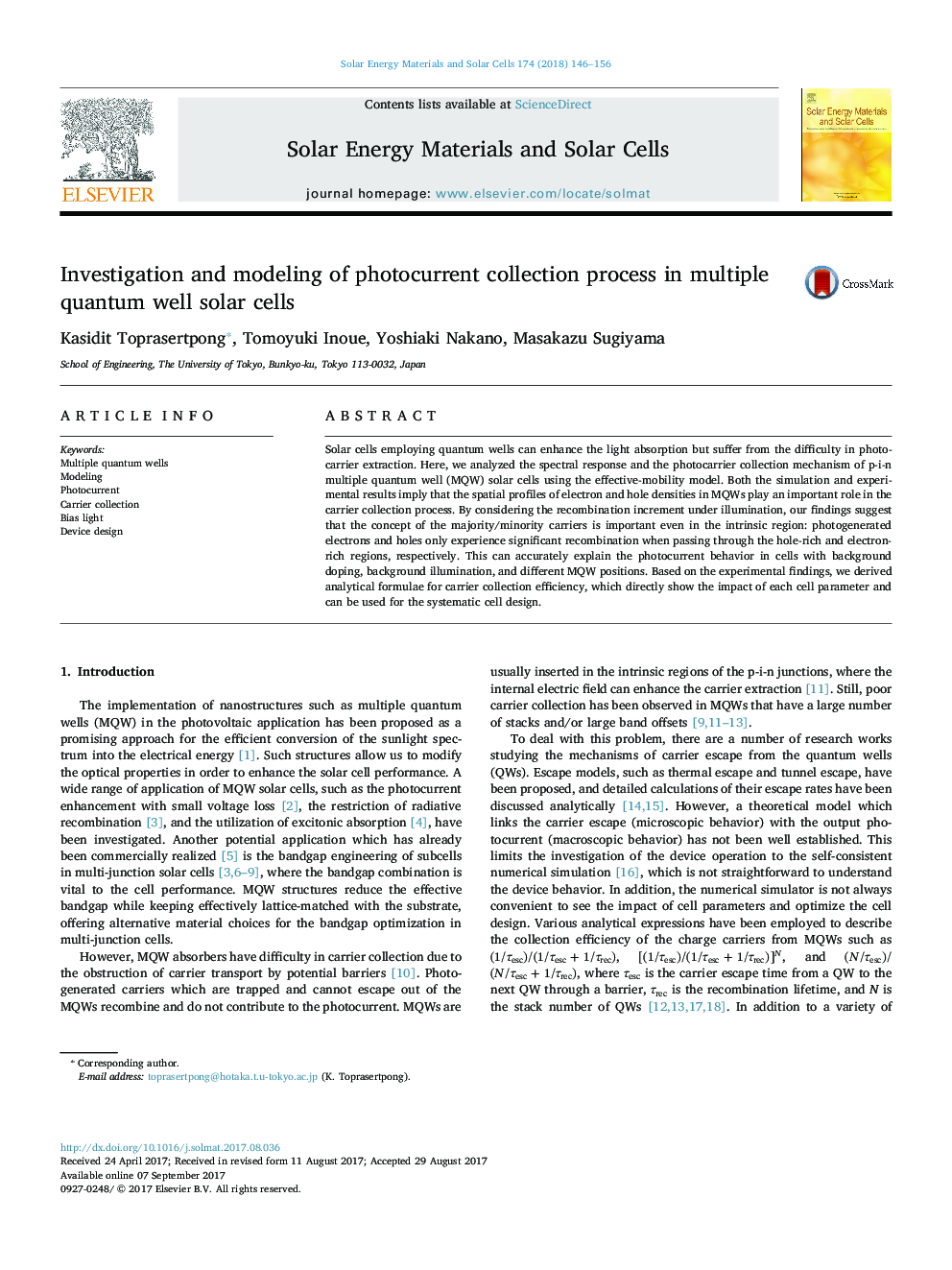| Article ID | Journal | Published Year | Pages | File Type |
|---|---|---|---|---|
| 6456637 | Solar Energy Materials and Solar Cells | 2018 | 11 Pages |
â¢The behavior of photocurrent in low-mobility MQW solar cells is investigated.â¢Carrier distribution in the i-region is an important factor for carrier collection.â¢The impacts of background doping, bias light, and MQW position on EQE are clarified.â¢We derive analytical expressions for carrier collection efficiency.â¢Our model is applicable to the cell design including well number and position.
Solar cells employing quantum wells can enhance the light absorption but suffer from the difficulty in photocarrier extraction. Here, we analyzed the spectral response and the photocarrier collection mechanism of p-i-n multiple quantum well (MQW) solar cells using the effective-mobility model. Both the simulation and experimental results imply that the spatial profiles of electron and hole densities in MQWs play an important role in the carrier collection process. By considering the recombination increment under illumination, our findings suggest that the concept of the majority/minority carriers is important even in the intrinsic region: photogenerated electrons and holes only experience significant recombination when passing through the hole-rich and electron-rich regions, respectively. This can accurately explain the photocurrent behavior in cells with background doping, background illumination, and different MQW positions. Based on the experimental findings, we derived analytical formulae for carrier collection efficiency, which directly show the impact of each cell parameter and can be used for the systematic cell design.
